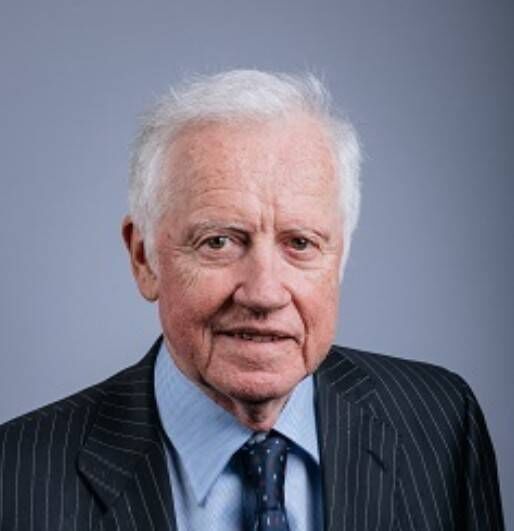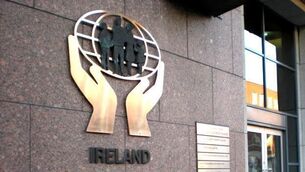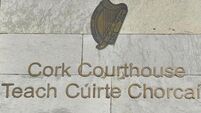New horizon for pensions: Finance Act heralds 'a new era' for retirement

Thanks to auto-enrolment (AE), people will start thinking about and engaging with their pensions earlier. They will look at saving options like PRSAs, whose advantages include their flexibility in investment terms and the fact that they allow for deduction of tax at the higher marginal rate.
The 2024 Finance Act has paved the way for what is being described as a new era for pensions in Ireland.
During 2025, the introduction of the ambitious auto-enrolment project was once again postponed, but a final go-ahead looks set for the start of next January.
The key changes introduced in the Finance Act are as follows:
- A significant phased increase in the threshold above which a 40% penalty tax is charged on the cumulative value of accumulated retirement benefits.
- The capping of tax relief on the employer’s contribution at 100% of the salary of a recipient employee in the case of Personal Retirement Savings Accounts (PRSAs).
The Standard Fund Threshold (SFT) has remained fixed at €2m over the past decade during a time of high salary growth. A penalty tax known as the CET, or Chargeable Excess Tax, is applied at a rate of 40% on any amount of pension saving in excess of the €2m limit.
This liability is on top of any exposure to Income Tax, USC (Universal Social Charge) and PRSI.
Experts have noted that the retention of the threshold at this level has created some challenges for the Government when it comes to the retention and recruitment of people for highly skilled roles.
At the same time, private sector employers have had to restructure financial packages to deal with the fact that the threshold has been falling in real terms.
The economist Dr Donal de Buitleir was engaged to assess the impact of the SFT. He recommended that the limit be raised to €2.8m in stages from 2026 to 2029 and that the threshold be indexed for inflation from 2030.
It is worth noting that the changes will not apply retrospectively to those who have fully accessed their funds.
An interdepartmental working group is considering further changes. There are suggestions that the CET could be reduced — perhaps down to 10%.

Advisers are recommending that beneficiaries time their pension drawdowns to take maximum advantage of the changes as they are rolled out.
A cap on the tax relief in respect of PRSAs was also introduced in the 2024 Finance Act in November, with restrictions on tax transfers from non vested to vested PRSAs.
From next January, such a transfer will be considered a “benefit crystallization event” resulting in taxes being applied.
This could impact higher earners. Experts have suggested that high taxpaying individuals should review their situation to determine whether or not PRSAs remain the most suitable retirement saving vehicle as opposed to occupational schemes.
The advantages of PRSAs include their flexibility in investment terms and the fact that they allow for deduction of tax at the higher marginal rate.
There are drawbacks. Generally, funds cannot be accessed before the age of 60. They are also self-managed, so more responsibility for the operation of the fund falls on the individual employee.
For employers, the big current challenge is that posed by the impending launch of a new system of auto-enrolment, which provides for the automatic opt-in of most employees to superannuation funds subsidized by the Government and the employer.
The details of the scheme are set out in Government statements and publications and need not be reiterated here. Suffice to say that some employers have expressed concern about the challenges that are posed in terms of administration and communication (with members of staff).
There are also issues around the question of cost at a time when labour costs and the national minimum wage have been on the rise alongside a host of other inflationary pressures.
Supporters of the change can argue forcefully that the status quo cannot be allowed to continue. As Ireland’s population ages, the ratio of worker to pensioner has begun to fall and the sustainability of our socially funded State pension is being called into question.
It is clear that people in the workforce have to be encouraged to make supplementary pension provision.
The Australian government, for example, started to grasp this nettle back in the 1980s and over a period of high growth in share values, it has built up a large superannuation fund.
Ireland’s Central Statistics Office last year published figures showing that total accrued pension liabilities in Ireland stood at €767 billion, or 177% of GDP at the end of 2021.
Almost €650bn of this was accounted for by Government schemes, including €470bn that is owed through the Social Insurance Fund from which State pensions are paid.
Considerable effort at Government level has been put into the development of auto-enrolment, which looks set to evolve along lines set around 15years ago by the UK government and the then-Chancellor of the Exchequer George Osborne.
Contribution rates will rise in a staged manner. The management of the funds will be farmed out to outside providers. The aim will be to ensure that their services are priced competitively while the funds are invested in a wide range of instruments.
Some employers have warned that if they have to put aside 1.5% of their employees’ wages under auto-enrolment, they will not be providing pay increases. At the same time, a relatively small minority of employees are aware of the likely change.
Participation in private pensions is particularly low among young people and among those working in areas such as hospitality and retail where employees tend to be young.
The CSO has estimated that just over two-thirds of workers have some form of supplementary pension cover. This rises to 80% among those aged between 45 and 54. The question arises as to how adequate that cover is.
Some in the industry argue that auto-enrolment is more suited to the needs of low to average as opposed to higher salary earners.
Much depends on whether the employer already has in place a company pension scheme. This is less likely in the case of smaller firms for obvious reasons.
Some experts argue that the introduction of auto-enrolment should act as an incentive to get every employee signed up to an existing company pension scheme if such exists.
Under auto-enrolment, the tax relief is the equivalent of 25%, leaving marginal taxpayers worse off. It may be in the interest of high earners to lobby their employer to set up a company scheme if one does not already exist.
The decision to delay the launch of the scheme from the end of September until January is to allow more time for preparation of the payroll system — something of particular importance for charities and smaller firms.
The idea is that payroll should be geared up to allow for the automatic deduction of auto-enrolment contributions from employees.
A big job of communication with employees awaits. However, the previous experience of auto-enrolment systems elsewhere — Ireland is a latecomer — suggests that acceptance of the reform by employer and employee alike can be secured.















